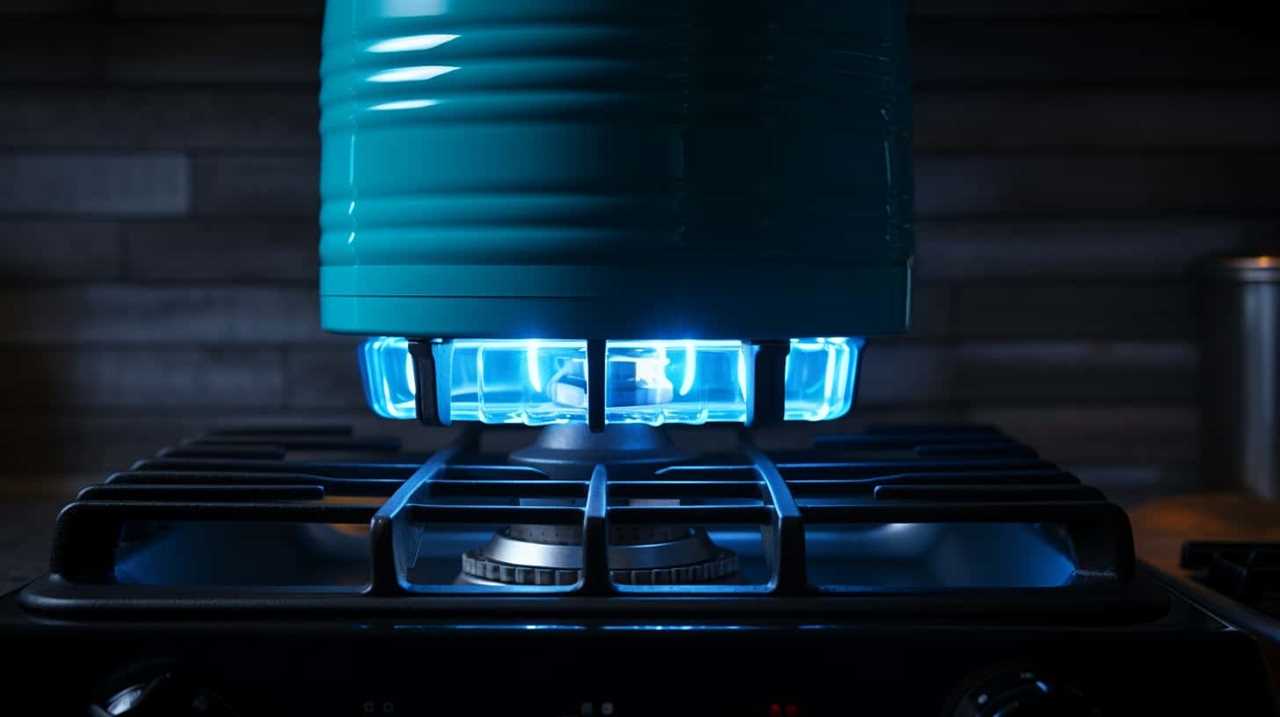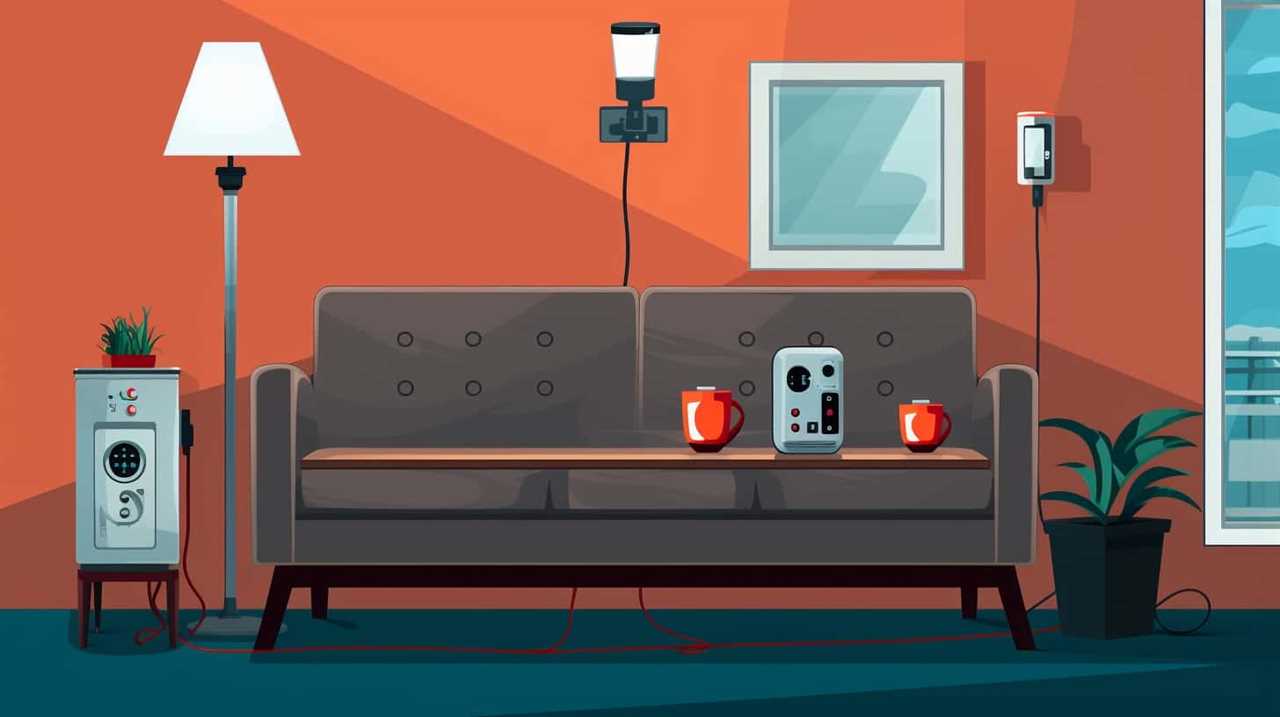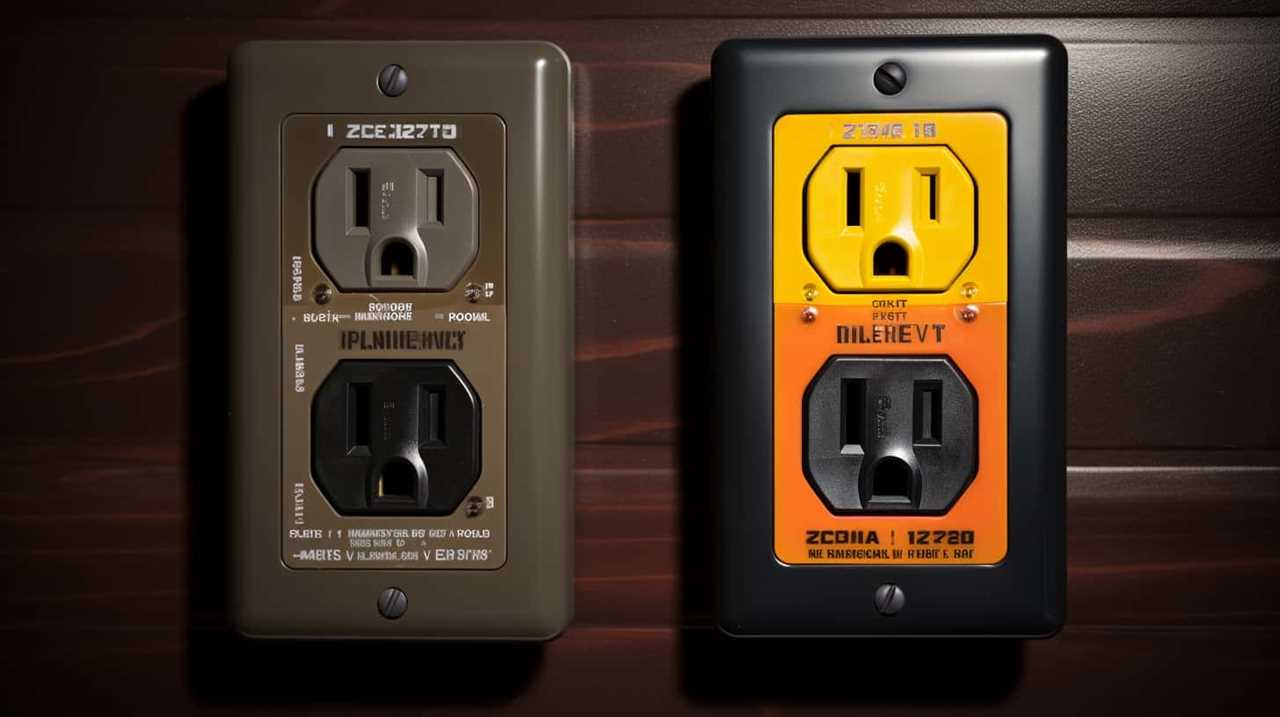In the pursuit of mastering one’s understanding of electrical appliances, a crucial skill to possess is the ability to test these devices using a multimeter. By employing this versatile tool, one can effectively measure voltage, resistance, and troubleshoot common issues that may arise.
This guide aims to provide a comprehensive overview of the process, ensuring that individuals with a desire for mastery can confidently test electrical appliances with precision and accuracy.
To begin, we will delve into the fundamental knowledge required to comprehend the intricacies of a multimeter.
Following this, we will explore the necessary safety precautions and the proper setup of the multimeter.

Subsequently, we will cover the step-by-step process of testing voltage, resistance, and fuses.
Additionally, we will address testing appliances with varying voltages and offer troubleshooting strategies for common issues.
Finally, we will discuss the importance of maintaining and calibrating your multimeter to ensure consistent and reliable results.
Key Takeaways
- Multimeter is a versatile tool for measuring voltage, current, and resistance.
- Regular calibration is necessary for maintaining accuracy.
- Troubleshoot connections before testing.
- Follow safety precautions to minimize the risk of accidents or damage.
Understanding the Multimeter
One essential step in testing electrical appliances with a multimeter is to understand the different functions and components of the device.

A multimeter is a versatile tool that allows for the measurement of various electrical quantities, such as voltage, current, and resistance. Accuracy is crucial when using a multimeter, as accurate readings ensure reliable test results.
To ensure multimeter accuracy, it is important to calibrate the device regularly and follow the manufacturer’s instructions for use.
When measuring current, it is necessary to select the appropriate current range on the multimeter and connect the device in series with the circuit being tested.
Understanding how to properly use the multimeter’s functions and components will ensure accurate measurements and reliable testing results.

Now, let’s move on to discussing the safety precautions that should be followed when testing electrical appliances.
Safety Precautions
To ensure the safety of both the user and the electrical appliance being tested, it is essential to follow a set of safety precautions when using a multimeter. Here are some important guidelines to keep in mind:
- Always wear appropriate personal protective equipment (PPE), such as gloves and safety goggles, when handling electrical equipment.
- Make sure the appliance is disconnected from the power source before testing. This will prevent electric shock and potential damage to the device.
- Avoid touching the metal probes of the multimeter while it is connected to a power source. This can cause electric shock or damage to the multimeter.
- Familiarize yourself with the testing techniques and procedures outlined in the multimeter’s user manual to ensure accurate and safe testing.
By following these safety precautions, you can minimize the risk of accidents or damage while handling electrical equipment.
Now, let’s move on to the next section on setting up the multimeter.

Setting Up the Multimeter
To ensure accurate and safe testing of electrical appliances, it is important to properly set up the multimeter. One crucial step in setting up the multimeter is calibrating its accuracy. This involves comparing the readings of the multimeter with a known value to ensure its measurements are precise. Calibration should be performed regularly, especially if the multimeter is subjected to extreme conditions or significant physical stress.
Another important aspect of setting up the multimeter is troubleshooting connections. Before connecting the multimeter to the electrical appliance, it is essential to check for loose or damaged wires, connectors, or probes. Faulty connections can lead to inaccurate readings or even electrical hazards. By ensuring all connections are secure and in good condition, the multimeter can provide reliable measurements.
Properly setting up the multimeter through calibrating accuracy and troubleshooting connections is critical for accurate and safe testing of electrical appliances.
Testing Voltage
To accurately assess the functionality of an electrical appliance, it is essential to proceed with testing the voltage using a multimeter, a valuable tool for measuring electrical potential. Testing voltage allows you to determine if the appliance is receiving the correct amount of power.

Here are some steps to follow when testing voltage:
- Set the multimeter to the AC voltage mode.
- Insert the red probe into the VΩmA port and the black probe into the COM port.
- Connect the red probe to the live wire and the black probe to the neutral wire.
- Read the voltage measurement on the multimeter’s display.
When testing voltage, it is important to remember that electrical appliances should be unplugged before conducting any tests. Additionally, always ensure that you are using the correct range on the multimeter to avoid any damage.
Testing Resistance
Accurate measurements of resistance are crucial in testing electrical appliances with a multimeter. By understanding the resistance values, technicians can identify faulty components and troubleshoot the issues effectively.
This allows for precise diagnosis and ensures that the appliances are functioning optimally.

Importance of Accurate Measurements
Measuring resistance accurately is crucial when testing electrical appliances with a multimeter. Accurate measurements not only ensure the reliability of the testing process but also contribute to electrical safety. Here are some key reasons why accurate measurements are important:
- Safety: Accurate resistance measurements help identify any potential issues or faults in the electrical appliance, minimizing the risk of electrical shocks or fires.
- Efficiency: Precise measurements aid in diagnosing problems quickly and efficiently, saving time and effort during troubleshooting.
- Performance: Accurate resistance readings allow for proper evaluation of the appliance’s performance, ensuring it meets the desired specifications.
- Maintenance: Reliable resistance measurements enable effective maintenance planning and prevent unexpected breakdowns, prolonging the lifespan of the electrical appliance.
Troubleshooting Faulty Resistance
Continuing from the importance of accurate measurements, an effective way to troubleshoot faulty resistance in electrical appliances is by utilizing a multimeter.
Troubleshooting faulty connections is crucial in detecting and rectifying potential issues. When testing resistance, the multimeter measures the flow of electric current through a circuit and provides a precise measurement in ohms. By connecting the multimeter probes to the two ends of a circuit, it can determine if there are any breaks or inconsistencies in the flow of current.
Additionally, testing insulation resistance is essential to ensure the safety and efficiency of electrical appliances. It helps identify any faulty insulation that could lead to short circuits or electrical shock hazards.

Testing resistance is an integral part of electrical appliance troubleshooting, and it provides valuable insights for further analysis.
Moving forward, let’s explore the next section on testing continuity.
Testing Continuity
To test the continuity of electrical appliances, an article determiner is used to provide accurate measurements and ensure proper functioning. Testing continuity is essential for identifying any breaks or interruptions in the electrical circuit.
Here are some steps to follow when testing continuity:

- Set the multimeter to the continuity mode.
- Connect the test leads to the corresponding terminals of the appliance.
- Touch the test probes to different points in the circuit to check for continuity.
- If there is continuity, the multimeter will emit a beep sound or display a low resistance value.
Testing continuity helps in troubleshooting electrical appliances, allowing you to identify and fix any faults in the circuit. By following these steps, you can ensure the proper functioning of your electrical appliances and prevent any potential hazards.
Testing Power Cords
To test power cords of electrical appliances effectively, use a multimeter to measure the electrical conductivity. Troubleshooting power cords is an essential step in ensuring the safe and proper functioning of electrical appliances.
With a multimeter, you can test the continuity of the power cord by checking if there is a continuous flow of electricity through it. Start by setting the multimeter to the continuity mode and then connect the probes to the two ends of the power cord. If the multimeter beeps or shows a low resistance reading, it indicates that the power cord is functioning properly.
Additionally, testing the grounding effectiveness of the power cord is crucial for electrical safety. By measuring the resistance between the ground prong and the cord’s plug prongs, you can ensure that the grounding is working effectively. This step helps prevent electric shocks and protects against electrical faults.

Now that we have covered testing power cords, let’s move on to the next section about testing switches.
Testing Switches
When troubleshooting switch functionality, it is important to understand the different types of electrical switches and how to interpret multimeter readings.
Switches can vary in design and purpose, including single-pole, double-pole, and three-way switches.
Switch Functionality Troubleshooting
The article explores the process of testing the functionality of switches in electrical appliances using a multimeter. Troubleshooting switch functionality is essential for identifying and repairing any issues with switches in electrical appliances.

Here are some steps to follow when testing switch functionality:
- Set the multimeter to the resistance or continuity mode.
- Disconnect the appliance from the power source.
- Remove the switch cover and expose the terminals.
- Touch the multimeter probes to the switch terminals and check for continuity or resistance.
By performing these steps, you can determine if the switch is functioning properly or if it needs repair.
Testing switch functionality is crucial for ensuring the safe and efficient operation of electrical appliances.
Types of Electrical Switches
Differentiate electrical switches and test their functionality using a multimeter.

There are various types of electrical switches, each designed for specific applications. The most common types include toggle switches, push-button switches, rocker switches, rotary switches, and slide switches.
Toggle switches are simple switches that can be flipped on or off. Push-button switches are momentary switches that are pressed to activate a circuit. Rocker switches have a lever that can be rocked back and forth to control the circuit. Rotary switches have a rotating dial that allows the user to select different positions. Slide switches have a slider that can be moved to open or close the circuit.
To test the functionality of these switches, a multimeter can be used to measure the continuity or resistance across the switch contacts. This will help determine if the switch is functioning properly or if it needs to be replaced.
Transitioning into the subsequent section about ‘multimeter readings for switches’, we will now explore the step-by-step process of testing switches using a multimeter.

Multimeter Readings for Switches
To accurately assess the functionality of electrical switches, it is essential to understand the multimeter readings associated with testing them. Multimeters are versatile tools that can provide valuable information about the condition of switches. Here are some key multimeter readings to consider when testing switches:
- Continuity: When the switch is in the closed position, the multimeter should display a reading close to zero ohms, indicating that there is a complete circuit.
- Resistance: When the switch is in the open position, the multimeter should display a reading of infinity or OL, indicating that there is no continuity and the circuit is open.
- Voltage Drop: When the switch is in the closed position, the multimeter should display a very low voltage reading across the switch terminals, indicating that the switch is conducting effectively.
- Current: By measuring the current passing through the switch, the multimeter can help troubleshoot any issues related to excessive or insufficient current flow.
Understanding these multimeter readings will enable you to effectively test switch functionality and troubleshoot any issues that may arise.
Testing Outlets
We can begin testing outlets by ensuring that safety precautions are taken and the multimeter is set to the appropriate settings. Testing outlets is crucial for identifying any potential issues and ensuring they are functioning properly. When testing GFCI outlets, it is important to press the "Test" button and check if the multimeter reads zero or very close to zero. This indicates that the GFCI outlet is working correctly. On the other hand, if the multimeter reads a significant voltage, it means that the GFCI outlet is not functioning properly and needs to be replaced. Troubleshooting outlet issues involves checking for loose connections, damaged wiring, or faulty receptacles. Using a multimeter helps in accurately diagnosing and resolving these problems.
| Testing GFCI Outlets | Troubleshooting Outlet Issues |
|---|---|
| Press "Test" button | Check for loose connections |
| Multimeter should read zero or close to zero | Inspect for damaged wiring |
| If significant voltage is detected, replace the outlet | Check for faulty receptacles |
Testing Light Bulbs
When testing light bulbs with a multimeter, there are several key points to consider.

Firstly, it is important to ensure that the voltage of the bulb is compatible with the multimeter’s range.
Secondly, testing for continuity can help determine if there are any breaks in the filament or wiring of the bulb.
Lastly, identifying faulty bulbs can be done by comparing the resistance readings of different bulbs.
Bulb Voltage Compatibility
By assessing the voltage compatibility of light bulbs, one can ensure their safe and efficient usage. It is important to consider the bulb wattage capacity and test different bulb types to determine their voltage requirements.

To effectively test the voltage compatibility of light bulbs, follow these steps:
- Refer to the manufacturer’s specifications: Check the packaging or the bulb itself for information on the recommended voltage range.
- Use a multimeter: Set the multimeter to the voltage measurement mode and connect the test leads to the bulb socket. Measure the voltage while the bulb is turned on.
- Compare the reading: Compare the measured voltage with the recommended voltage range. If it falls within this range, the bulb is compatible.
- Repeat the process: Test different bulb types to ensure their voltage compatibility.
Testing for Continuity
To test for continuity in light bulbs, a multimeter can be used to determine if there is a complete electrical path. This is done by checking the circuit continuity of the bulb filament.
A multimeter, set to the continuity mode, is connected to the two terminals of the light bulb. If the multimeter beeps or displays a positive reading, it means that there is continuity in the bulb filament and the bulb is functioning properly. However, if there is no beep or the multimeter displays a negative reading, it indicates a break in the filament and the bulb is faulty.
In order to further identify faulty bulbs, additional tests such as visual inspection for filament breakage or using a continuity tester can be performed.

Identifying Faulty Bulbs
In this section, we will explore methods for effectively identifying faulty light bulbs during the process of testing electrical appliances with a multimeter. When troubleshooting light bulbs, it is important to consider bulb wattage compatibility and address any issues of flickering bulbs. Here are some key steps to follow:
- Check the wattage compatibility: Ensure that the bulb wattage matches the recommended wattage for the fixture. Using a higher wattage bulb can cause overheating and damage.
- Inspect the bulb for physical damage: Look for any visible signs of damage such as cracks, broken filaments, or loose connections.
- Test the bulb with a multimeter: Set the multimeter to the resistance mode and touch the probes to the bulb’s terminals. A reading close to zero indicates a good bulb.
- Replace the bulb: If the bulb fails any of the above tests, it is likely faulty and should be replaced.
Testing Fuses
When testing electrical appliances with a multimeter, it is essential to understand how to test fuses. Fuses are designed to protect the electrical circuit from excessive current flow and prevent damage to the appliance. If a fuse is blown, the appliance will not function properly.
To troubleshoot blown fuses, follow these steps:
- Turn off the appliance and unplug it from the power source.
- Locate the fuse panel or fuse holder in the appliance.
- Use a multimeter set to the resistance mode (Ω).
- Place the multimeter probes on both ends of the fuse.
- If the multimeter shows a reading close to zero, the fuse is intact. If the reading is infinity or very high, the fuse is blown and needs to be replaced.
Testing fuses with a multimeter is a straightforward process that can help identify and resolve electrical issues in appliances.

Testing Appliances With Different Voltages
With the use of a multimeter, testing appliances with different voltages can be done accurately and efficiently. Here are some key points to consider when testing appliances with varying voltages:
- Set the multimeter to the appropriate voltage range for the appliance being tested.
- Ensure the appliance is properly connected to a power source before testing.
- Measure the voltage across the appliance terminals using the multimeter probes.
- Compare the measured voltage to the expected voltage range specified by the manufacturer.
By following these steps, you can determine if the appliance is receiving the correct voltage and troubleshoot any faulty resistance. This is crucial for ensuring the proper functioning of electrical appliances and preventing potential damage or hazards.
Now, let’s move on to troubleshooting common issues that may arise during appliance testing.
Troubleshooting Common Issues
To effectively troubleshoot common issues, it is important to carefully analyze the readings obtained from the multimeter during the appliance testing process.

When troubleshooting power issues, one of the first steps is to check if the appliance is receiving power. Use the multimeter to measure the voltage at the power source and ensure it is within the expected range. If the voltage is low or absent, there may be an issue with the power supply or the electrical outlet.
Next, it is crucial to identify faulty components. Use the multimeter to test the continuity of wires, fuses, and switches. Look for any readings that deviate from the expected values or show infinite resistance. These could indicate faulty components that need to be replaced or repaired.
Maintaining and Calibrating Your Multimeter
After carefully analyzing the multimeter readings during the appliance testing process, it is essential to ensure the accuracy and reliability of your measurements by maintaining and calibrating your multimeter regularly. Maintaining and calibrating your multimeter will help you troubleshoot electrical appliances more effectively and provide accurate results.
Here are some key steps to consider:

- Clean your multimeter regularly to remove any dirt or debris that may affect its performance.
- Check the battery level frequently to ensure accurate readings.
- Calibrate your multimeter using a known reference source to verify its accuracy.
- Keep your multimeter in a protective case or pouch to prevent damage during storage or transportation.
Frequently Asked Questions
Can a Multimeter Be Used to Test the Functionality of a Circuit Breaker?
A multimeter can be used to diagnose a faulty circuit breaker by measuring voltage, current, and resistance. Common troubleshooting steps include checking for continuity, testing for voltage presence, and ensuring proper grounding.
How Do I Test the Electrical Current of a Battery Using a Multimeter?
To test the electrical current of a battery using a multimeter, set the multimeter to the appropriate voltage range, connect the red and black probes to the positive and negative terminals of the battery respectively, and read the voltage displayed on the multimeter.
Can a Multimeter Be Used to Test the Resistance of a Wire?
Yes, a multimeter can be used to test the resistance of a wire. This is a common troubleshooting technique to identify faulty wires and ensure proper electrical conductivity in circuits.
Is It Safe to Test Electrical Appliances Using a Multimeter While They Are Still Plugged In?
Testing electrical appliances with a multimeter while they are still plugged in is not safe due to the risk of electric shock. Safety precautions, such as unplugging the appliance and following proper procedures, must be followed to ensure personal safety.

Can a Multimeter Be Used to Test the Functionality of a Ground Fault Circuit Interrupter (Gfci) Outlet?
Yes, a multimeter can be used to test the functionality of a ground fault circuit interrupter (GFCI) outlet. By measuring the voltage and resistance, one can troubleshoot and identify any issues with the GFCI outlet.
Conclusion
In conclusion, testing electrical appliances with a multimeter is a crucial skill for ensuring their safety and functionality.
By understanding the multimeter, following safety precautions, and properly setting it up, one can effectively test voltage, resistance, fuses, and appliances with different voltages.
Troubleshooting common issues and maintaining and calibrating the multimeter are also important steps in this process.

Remember, like a compass guiding your way, a multimeter empowers you to navigate the electrical landscape with confidence and precision.










